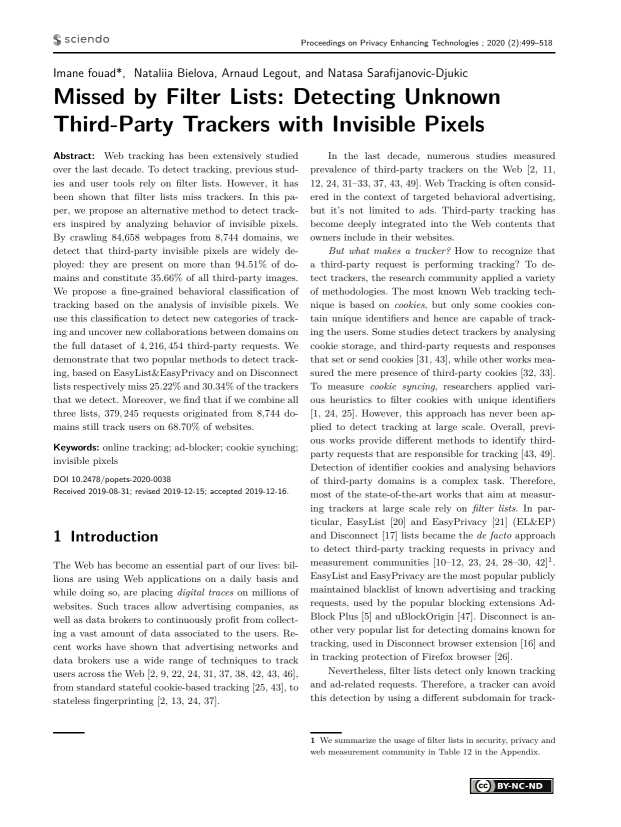Missed by Filter Lists: Detecting Unknown Third-Party Trackers with Invisible Pixels
Authors: Imane fouad, Nataliia Bielova, Arnaud Legout, Natasa Sarafijanovic-Djukic
Volume: 2020
Issue: 2
Pages: 499–518
DOI: https://doi.org/10.2478/popets-2020-0038
Abstract: Web tracking has been extensively studied over the last decade. To detect tracking, previous studies and user tools rely on filter lists. However, it has been shown that filter lists miss trackers. In this paper, we propose an alternative method to detect trackers inspired by analyzing behavior of invisible pixels. By crawling 84,658 webpages from 8,744 domains, we detect that third-party invisible pixels are widely deployed: they are present on more than 94.51% of domains and constitute 35.66% of all third-party images. We propose a fine-grained behavioral classification of tracking based on the analysis of invisible pixels. We use this classification to detect new categories of tracking and uncover new collaborations between domains on the full dataset of 4, 216, 454 third-party requests. We demonstrate that two popular methods to detect tracking, based on EasyList&EasyPrivacy and on Disconnect lists respectively miss 25.22% and 30.34% of the trackers that we detect. Moreover, we find that if we combine all three lists, 379, 245 requests originated from 8,744 domains still track users on 68.70% of websites.
Keywords: online tracking; ad-blocker; cookie synching; invisible pixels
Copyright in PoPETs articles are held by their authors. This article is published under a Creative Commons Attribution-NonCommercial-NoDerivs 3.0 license.

